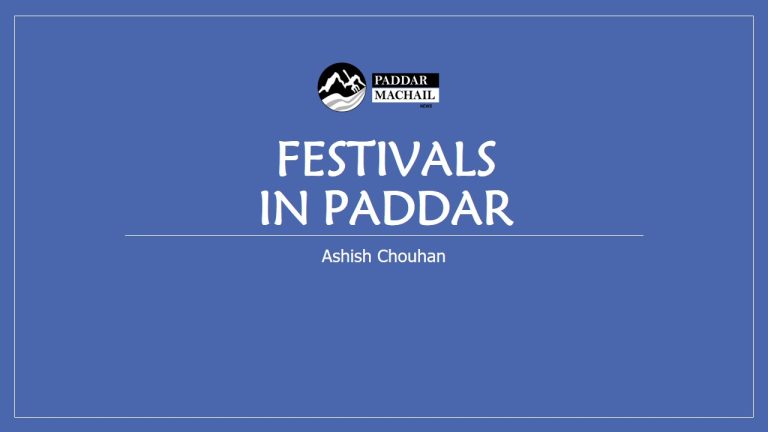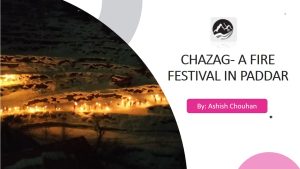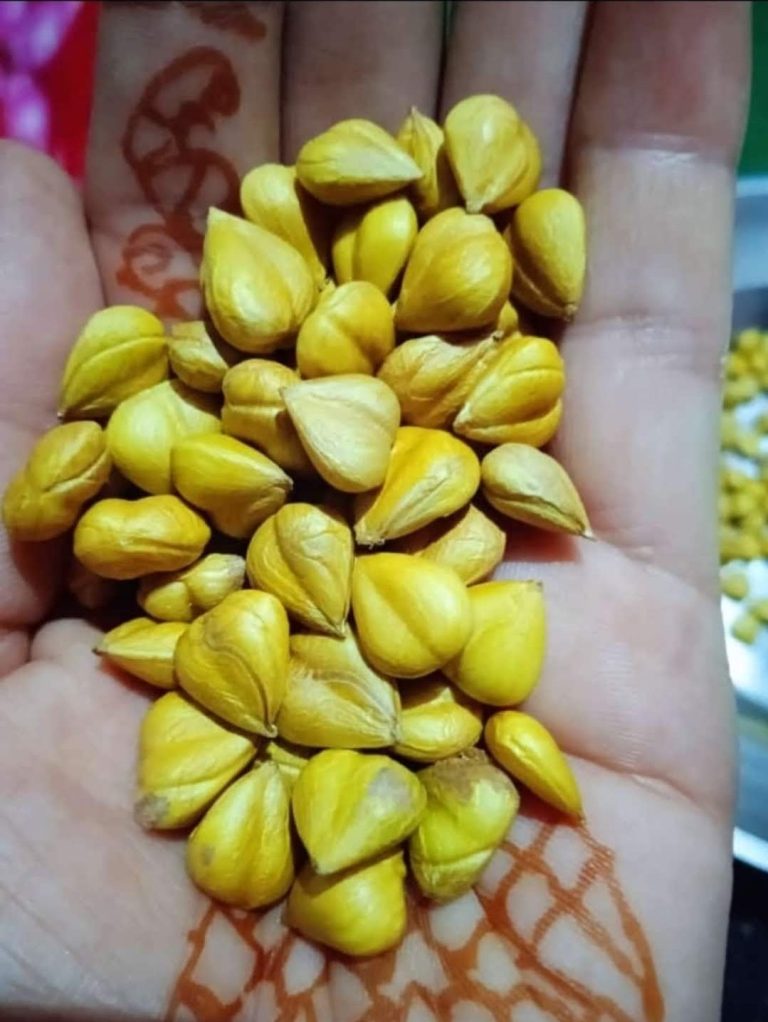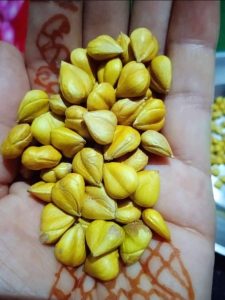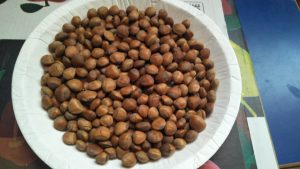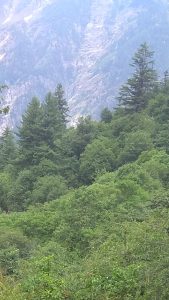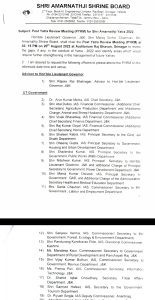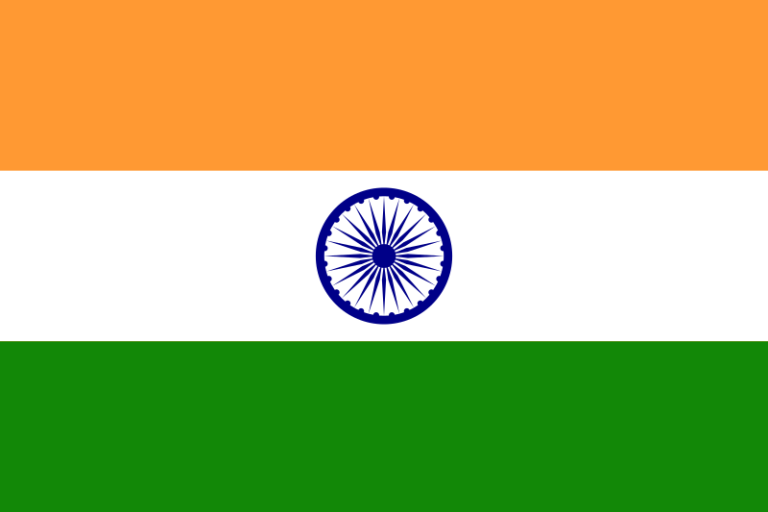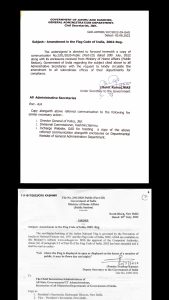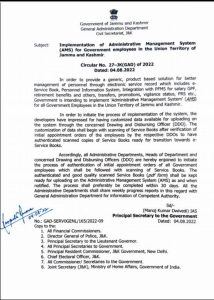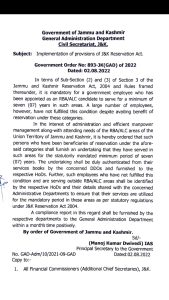Paddar is a land of myriad festivals and if we want to know the culture of this land we must look at the nature of these festivals and the way they are celebrated. There are fifty above villages in Paddar and each village has some distinct festival connected to it. These festivals give different colors to the region and make it a distinct place in this world. Most of these festivals are born out of agricultural practices and seasonal changes. Some are associated with the solutions linked to problems and some have their genesis linked to divine intervention. All these festivals are germinated from legends that tell us something about the society of Paddar. Certain festivals are exclusive to this region and hence represent the evolution of the culture of Paddar. Of all these festivals here are some of these which are famous across the length and breadth of this subdivision.
List of some popular Festivals in Paddar:
- Maghe
- Zaagra
- Mithyag
- Cheyt
- Kanchait
- Shivratri
- Awaans
- Bhoondu Ki Zaath
- Dikhryun
- Fulaith
- Naghooi
- Losar
- Poornima
- Chazag
All these festivals in Paddar are celebrated with great zeal and enthusiasm every year. People from all across the Paddar and neighboring regions of Paddar come to see this. Charm of these festivals has decreased to some extent though with time after the advent of modernity but these are still the backbone that has kept glued to the different villages of Paddar. One can catch a glimpse of Paddri culture during these festivals. We shall deal with every festival concisely here.
- Maghe (Magh Mela)
Maghe is a famous festival of the region which is celebrated in the Ligri village of Paddar. It was celebrated yearly but is now celebrated every third year. This is not an agricultural festival. It is celebrated in the memory of two sisters Nainar and Naigad of Kadyulu village. Legend tells that once these two sisters went into the jungles while chasing a flower and lost their path. Wandering for days these two sisters reached Dacchan, a place in Kishtwar District. They had lost their path and there was no point of their return to their native place. They waited for years practicing something peculiar in the jungles of Dacchan. They got enlightened in the course. One day when they were resting on the roof of their makeshift house they heard the music of the flute and recognized that it belonged to their region Paddar. They approached him and asked him if they shall follow him on his way back home. He agreed but the sisters gave him one condition he would not turn his head back until they reach home and if he looked back in case he would be turned into a stone. They agreed and all the three marched towards Paddar. He ran out of patience in the middle and looked back. All of a sudden he was turned into a stone and a pond was created at a place they reached called Monhal nowadays. The Father of these two sisters had a dream that night and in it, they asked him to send some food to the lake. He went there and placed food on the side of the lake. This happened for a long time. One day when he reached his ripe age he sent his servant to the place. The servant took food to the land but disrespected them by pulling their hands when they tried to eat that. They kicked him energetically which threw him straight to a place called Massu, killing him. That night his ailing father again had a dream in which they told him that despite sending someone else you should arrange a feast once in a year. Food made during the festival would reach them, they told him in the dream. He acted on his dream and this festival, later on, turned into one of the famous festivals of Paddar. It is believed that it is celebrated since then.
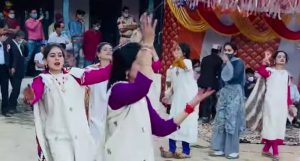
During this festival, Chelas from Ligri, Massu and Kadyulu villages perform some bizarre rituals which are worth watching. This festival has played a vital role in bringing these different villages on one single platform and people from the nook and corner of the Paddar region together.
- Zaagra
Zaagra is a very famous festival celebrated in the heart of Paddar i.e. Gulabgarh. It is a festival dedicated to Mata Chandi. On this occasion, Chelas (holy men) from many villages like Laddar, Sohal, and Atholi come here. Devotees from all across Paddar and neighboring areas of Paddar viz Doda, Kishtwar, Pangi, and Bhaderwah throng this region. This festival goes on for two days.
Chelas accumulate kindling near the temple in the middle of the village. They lit this heap of dry wooden logs thereafter and dance around it all night. In the middle of the night, one chela crosses the embers left out of the fire and goes to the jungle. He cuts a branch of a pine tree in the jungle and brings it with the crack of dawn to a place where the fire was lit last night. After that, he dances with that branch and revolves around the holy fire three times. People try to touch the tip of that branch then as it is considered auspicious by the people of the region. It is believed that this act fulfills all wishes of the devotees. The origin of this festival is linked to the legend of the old lady of Mindhal.
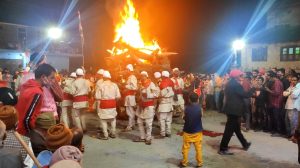
Many activities take place during this festival. Businessmen set up pandals all night. In the morning wrestling takes place in the sandy plains of the Gulabgarh region. People participate in it with great vigor. This festival plays an immense role in forging unity among all the villagers of Paddar.
- Mithyag
It is an agricultural festival celebrated all over Paddar. Popular in the Atholi-Kundal and Jar region of the subdivision this festival is celebrated in the March-April month every third year. With the onset of the spring season when people begin farming they worship their fields first. This worship of land and other implements used in agricultural practices is called Mithyag in Paddar.
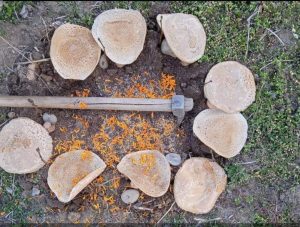
During this festival, chelas from Paddar come in full Paddri attire and dance all day. It is their way of welcoming the spring season and worshipping motherland. This festival goes on for five straight days. First in Kundal for one day, then in Atholi for three consecutive days, and finally in the Laddar village on the last day. The people of Paddar pray to God for better crop yields.
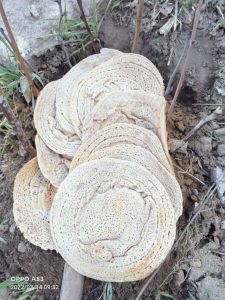
- Cheyt
Cheyt is a festival celebrated mainly to thank different deities of the region. This festival runs for three consecutive days in many villages viz. Sohal, Garh and Ungaie. Holy men, pujaris, and Chelas gather at one place during these three days and perform different kinds of activities peculiar to this region. This festival is popular in the Garh village of Paddar where people from all across the Paddar gather on this occasion and celebrate this festival with great pomp and show. Earlier this festival was used to be conducted every third year but now no period has been fixed for it. It can even take 10 long years.
During this festival, Chelas wear typical Paddri dress and dance in a state of trance. Some of them pierce their cheeks and noses. This bizarre activity fills spectators with awe.
- Kanchait
This festival is not exclusive to the Paddar region though but it is celebrated with great fervor. This festival is dedicated to Lord Shiva. On this occasion, people from all across the Paddar make fried blobs of wheat flour (badas) and some delicious recipes in their homes. This festival goes on for 4 consecutive days. Each day is known by its peculiar name viz Zhhazhou, Chikhyar, Gaurtyas, and Oosaayr. This festival is celebrated in the memory of Lord Shiva and his consort Parvati’s marriage.
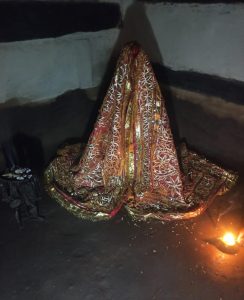
Although it is celebrated in all the villages of Paddar it is very famous in the Massu village. On the last day of this festival devotees of Lord Shiva take hand-made idols of Parvati and immerse them in the waters. Followed by that dance takes place in which all the devotees and holy-men dance.
- Shivratri
A full blog on this festival is available on our website. Click here.
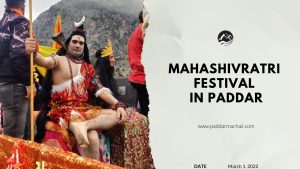
- Awaans
Awaans is celebrated in the western region of Paddar in the village of Karthie Paddar. This festival is unique of its kind because it is celebrated to strengthen the matrimonial relations and sanctity associated with it. On this day people of Sazar bring traditional drums (Dhol) from their village to Karthie Paddar. The people of Karthie Paddar welcome them. Followed by this, a grand dance happens in the middle of the village. This feast takes place for a few days before this comes to an end.
Legend tells that once a boy from village Dhyaan married a girl from Sazar. Dhyaan village was located just opposite to the Sazar in the Shashoo region of the current Paddar. This village was supported by the only source of water called Tyajal Nag (Spring). This spring dried up with time and hence all the inhabitants were forced to leave the village. At this time when the spring dried up, this marriage of theirs took a dramatic turn. A girl from Sazar village asked his villagers to bring a drum in the memory of this marriage every year so that our contact after this abandonment may remain always. They moved from Dhyaan to Kadhail initially and finally to Karthie in the 1960s.
This practice of bringing traditional drums culminated in the famous festival of Awaans in the later years. Nowadays this festival is celebrated once in three years.
- Bhoondu –Ki –Zaath
This festival is celebrated in the Atholi village of Paddar. Legend tells that sometimes in the past, when the whole system of the village was in apple-pie order, Aavgaan, a furious demon Commander-in -Chief across from the village attacked Atholi Paddar in the month of Aasauj (October-November). He came from the other side of the mountain, from the Sharoth Dhar to attack the region. To face this army of demons, the ruling authority of Atholi (Mehraaj) selected a team of 12 commanders to neutralize them. They moved along the Dhaar from where they had received the information of the bout. This fight took place at the Sharoth Dhar for some days. Mehraaj’s army took the bull by horns and defeated the rivals. Watching this, Aavgaan tried to escape from the field but before he could do so Mehraaj got hold of him and punished him toughly. He cursed him with two of his soldiers and turned them into stones. On the other side, the people of Atholi got worried about the safety of their army men. To get information about them they sent another person uphill. He went in the direction he was supposed to go but before he could reach the battlefield he met all the commanders safe and secure, who were on their way back to the village. On meeting them they made a joke of him and the villagers for doubting their capability and competence. They sent him back and commanded him to go with the wild dhoop that is shangyl (Skimmia anquetilia), to begin the celebration of this grand victory. They returned to the village with long birch tree poles (deciduous hardwood tree of the genus, Betula) to celebrate this day their way. The poles they were carrying gave them the name of ‘Bhonds’. The people of Atholi welcomed them with great honor and respect. They surrounded their leader in the middle and danced all night. Everyone hailed him for his valor and courage. They were proud of their smart leader for his tactics and deftness which saved the land from the hands of demons. All the other twelve people who had fought in the war with Purple Heart married the girls (kanyas) then after performing the pooja. Villagers arranged their marriage with immense love and respect. Everyone enjoyed the victory profusely. To mark this, they began celebrating the day, every year, with great enthusiasm.

This celebration culminated in the festival of Bhondu-Ki-Zaath. It is also celebrated every third year. Even today, at the time of the festival 12 people from the respective houses, whose ancestors are believed to have participated in the war, go to the Sharoth Dhar for birch tree poles. They hit the three stones there with those poles back to back and then come to the village. They dance around the Meh Raj temple in traditional dress for the whole night that day. This is a festival of victory of good over evil which is celebrated in Atholi Paddar.
- Dikhryun
Dikhryun is celebrated in the Ishtyari village of Paddar. It is celebrated at the temple of Khandwa Nag. On this occasion, Chelas perform a wide range of supernatural acts. This festival is celebrated in July month every year when Sun enters the new phase after the summer solstice. People from all across the Paddar visit Ishtyari to catch a glimpse of this. Apart from Paddar, this festival is also celebrated in the Chamba region of Himachal Pradesh.
- Fulaith
This festival is also called Sherzaith in Paddar. This festival is also not exclusive to Paddar. It is also celebrated in some villages of the Chamba District in Himachal Pradesh. It is a seasonal festival. Beginning with the Chitto village of Paddar, this festival is celebrated later in the Tyari and Ishtari villages also. After that, it commences in the villages of Chamba District. Word Sherzaith is composed of two words Sher and Zaith. Shehr implies the autumn season and zaith means celebration. Hence this festival is celebrated in the welcome of the autumn season.
- Naghooi
Naghooi is celebrated in the Gandhari and Kabban villages of Paddar. As the name suggests this festival is celebrated in the reverence of Zherung Nag. At Gandhari this festival is celebrated in the courtyard of Maa Chandi Temple in Chag village. Every year this festival is celebrated in August. Naghooi is a famous festival of the eastern Paddar. Although it is celebrated in the Kabban village also but it is generally popular in Gandhari. People from the length and breadth of Paddar and Chamba District of Himachal Pardesh come to watch this renowned festival.
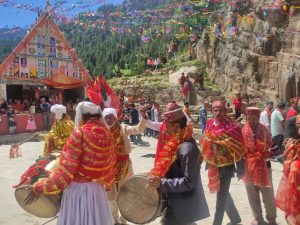
- Losar
Losar word is comprised of two Tibetan words Lo and Sar. Lo stands for a year and Sar stands for new. Hence it means the new year. This festival is mainly celebrated by the Buddhist community of Paddar. It falls in the month of December-January. This festival is generally celebrated to welcome the new year. On this occasion, people hoist flags on religious places and housetops, dance, and decorate their houses with good luck signs to mark the onset of New Year. Moreover, people on this day visit monastery, offer prayers, and clean their homes. Earlier it used to be a weeklong festival but with time its celebration has reduced to one day. Although this festival is not exclusive to this region and is celebrated in other areas also viz Pangi, Zanskar, and Ladakh but the culture of Paddar gives a unique aura to it which makes it special in Paddar.

- Poornima
This festival is celebrated in the Sazar village of Paddar. As the name suggests it falls on the full moon day in August. Coincidently it falls on the same day when Raksha Bandhan is celebrated all across the country.
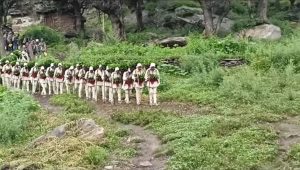
On this occasion, people of the village bring milk products from their makeshift houses on the higher reaches of Paddar. This is also an agricultural festival. A variety of activities and rituals are followed thereafter which give all the permission to relish milk products. While in Puhali (makeshift houses), no one eats anything curd, ghee, butter, etc and this festival just brings an end to this sacramental fast.
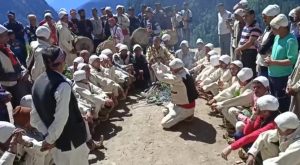
- Chazag
Chazag is one of the beautiful and exclusive festivals of Paddar which is celebrated twice in a year. Celebrated in the starting two weeks of January month this festival marks the end of the harsh winter season. On this day people of Paddar make Dhlyung (a typical local name for a stick curled at the top to hold kindling). They lit it in the evening and danced with it on the beats of traditional dhol called Dhouns in the local language. After that, they throw the extinguished bundles in the east direction, relish the sacrament and go to homes. This practice is awe-inspiring and gives goosebumps to one who watches it for the first time. For more on this festival, click here.
Last Words
Apart from all these, there are many other festivals and rituals which are famous in this Land of Sapphire and are celebrated with zeal and fervor in Paddar. Tlyusha Dhanus (Baisakhi), Athabarha, Dewaari, Mangal, Shehar Chaur, Gyokar, Chaurr, Dyo, Thanie, and Shwada are some examples to cite. One thing worth noting here is that many of these festivals are linked to agro-based activities. Many of them are linked to seasonal changes and many have their genesis linked to some challenges faced by the commoners. Paddar is known for these unique and exclusive cultural festivals. Many of these festivals which were celebrated yearly in the past are now being celebrated after a gap of two years. It reflects a paradigm shift in the cultural society of Paddar with the advent of modernity.


